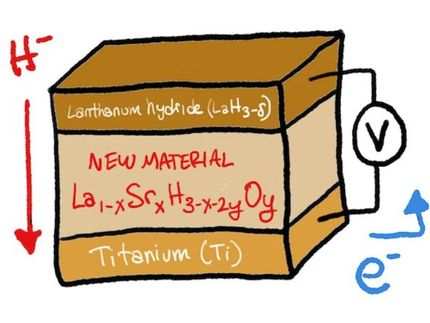A ‘liquid battery’ advance
“We are developing a new strategy for selectively converting and long-term storing of electrical energy in liquid fuels”
As California transitions rapidly to renewable fuels, it needs new technologies that can store power for the electric grid. Solar power drops at night and declines in winter. Wind power ebbs and flows. As a result, the state depends heavily on natural gas to smooth out highs and lows of renewable power.
“The electric grid uses energy at the same rate that you generate it, and if you’re not using it at that time, and you can’t store it, you must throw it away,” said Robert Waymouth, the Robert Eckles Swain Professor in Chemistry in the School of Humanities and Sciences.
Waymouth is leading a Stanford team to explore an emerging technology for renewable energy storage: liquid organic hydrogen carriers (LOHCs). Hydrogen is already used as fuel or a means for generating electricity, but containing and transporting it is tricky.
“We are developing a new strategy for selectively converting and long-term storing of electrical energy in liquid fuels,” said Waymouth, senior author of a study detailing this work in the Journal of the American Chemical Society. “We also discovered a novel, selective catalytic system for storing electrical energy in a liquid fuel without generating gaseous hydrogen.”
Liquid batteries
Batteries used to store electricity for the grid – plus smartphone and electric vehicle batteries – use lithium-ion technologies. Due to the scale of energy storage, researchers continue to search for systems that can supplement those technologies.
Among the candidates are LOHCs, which can store and release hydrogen using catalysts and elevated temperatures. Someday, LOHCs could widely function as “liquid batteries,” storing energy and efficiently returning it as usable fuel or electricity when needed.
The Waymouth team studies isopropanol and acetone as ingredients in hydrogen energy storage and release systems. Isopropanol – or rubbing alcohol – is a high-density liquid form of hydrogen that could be stored or transported through existing infrastructure until it’s time to use it as a fuel in a fuel cell or to release the hydrogen for use without emitting carbon dioxide.
Yet methods to produce isopropanol with electricity are inefficient. Two protons from water and two electrons can be converted into hydrogen gas, then a catalyst can produce isopropanol from this hydrogen. “But you don’t want hydrogen gas in this process,” said Waymouth. “Its energy density per unit volume is low. We need a way to make isopropanol directly from protons and electrons without producing hydrogen gas.”
Daniel Marron, lead author of this study who recently completed his Stanford PhD in chemistry, identified how to address this issue. He developed a catalyst system to combine two protons and two electrons with acetone to generate the LOHC isopropanol selectively, without generating hydrogen gas. He did this using iridium as the catalyst.
A key surprise was that cobaltocene was the magic additive. Cobaltocene, a chemical compound of cobalt, a non-precious metal, has long been used as a simple reducing agent and is relatively inexpensive. The researchers found that cobaltocene is unusually efficient when used as a co-catalyst in this reaction, directly delivering protons and electrons to the iridium catalyst rather than liberating hydrogen gas, as was previously expected.
A fundamental future
Cobalt is already a common material in batteries and in high demand, so the Stanford team is hoping their new understanding of cobaltocene’s properties could help scientists develop other catalysts for this process. For example, the researchers are exploring more abundant, non-precious earth metal catalysts, such as iron, to make future LOHC systems more affordable and scalable.
“This is basic fundamental science, but we think we have a new strategy for more selectively storing electrical energy in liquid fuels,” said Waymouth.
As this work evolves, the hope is that LOHC systems could improve energy storage for industry and energy sectors or for individual solar or wind farms.
And for all the complicated and challenging work behind the scenes, the process, as summarized by Waymouth, is actually quite elegant: “When you have excess energy, and there’s no demand for it on the grid, you store it as isopropanol. When you need the energy, you can return it as electricity.”
Original publication
Other news from the department science
Most read news
More news from our other portals
See the theme worlds for related content
Topic World Battery Technology
The topic world Battery Technology combines relevant knowledge in a unique way. Here you will find everything about suppliers and their products, webinars, white papers, catalogs and brochures.

Topic World Battery Technology
The topic world Battery Technology combines relevant knowledge in a unique way. Here you will find everything about suppliers and their products, webinars, white papers, catalogs and brochures.































































